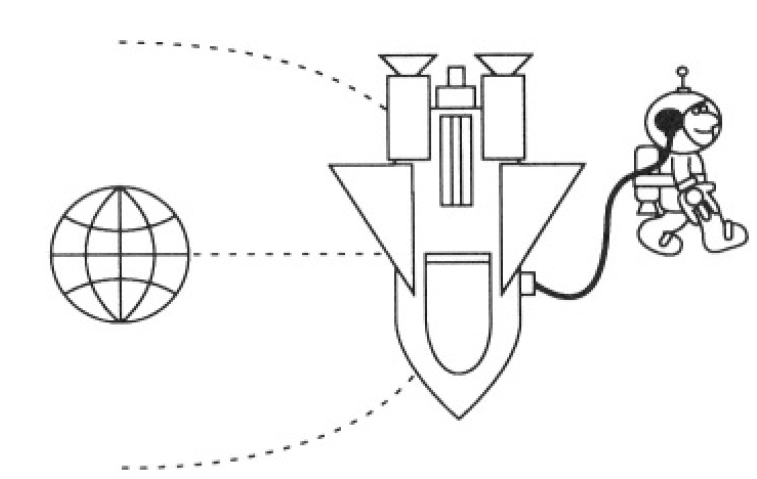
تاريخ الفيزياء

علماء الفيزياء


الفيزياء الكلاسيكية

الميكانيك

الديناميكا الحرارية


الكهربائية والمغناطيسية

الكهربائية

المغناطيسية

الكهرومغناطيسية


علم البصريات

تاريخ علم البصريات

الضوء

مواضيع عامة في علم البصريات

الصوت


الفيزياء الحديثة


النظرية النسبية

النظرية النسبية الخاصة

النظرية النسبية العامة

مواضيع عامة في النظرية النسبية

ميكانيكا الكم

الفيزياء الذرية

الفيزياء الجزيئية


الفيزياء النووية

مواضيع عامة في الفيزياء النووية

النشاط الاشعاعي


فيزياء الحالة الصلبة

الموصلات

أشباه الموصلات

العوازل

مواضيع عامة في الفيزياء الصلبة

فيزياء الجوامد


الليزر

أنواع الليزر

بعض تطبيقات الليزر

مواضيع عامة في الليزر


علم الفلك

تاريخ وعلماء علم الفلك

الثقوب السوداء


المجموعة الشمسية

الشمس

كوكب عطارد

كوكب الزهرة

كوكب الأرض

كوكب المريخ

كوكب المشتري

كوكب زحل

كوكب أورانوس

كوكب نبتون

كوكب بلوتو

القمر

كواكب ومواضيع اخرى

مواضيع عامة في علم الفلك

النجوم

البلازما

الألكترونيات

خواص المادة


الطاقة البديلة

الطاقة الشمسية

مواضيع عامة في الطاقة البديلة

المد والجزر

فيزياء الجسيمات


الفيزياء والعلوم الأخرى

الفيزياء الكيميائية

الفيزياء الرياضية

الفيزياء الحيوية

الفيزياء العامة


مواضيع عامة في الفيزياء

تجارب فيزيائية

مصطلحات وتعاريف فيزيائية

وحدات القياس الفيزيائية

طرائف الفيزياء

مواضيع اخرى
Astronaut Tether
المؤلف:
Sidney B. Cahn And Boris E. Nadgorny
المصدر:
A GUIDE TO PHYSICS PROBLEMS
الجزء والصفحة:
part 1 , p 9
25-7-2016
1938
Astronaut Tether
An astronaut of total mass 110 kg was doing an EVA (spacewalk, see Figure 1.1) when his jetpack failed. He realized that his only connection to

Figure 1.1
the spaceship was by the communication wire of length L = 100 m. It can support a tension of only 5 N before parting. Estimate if that is enough to keep him from drifting away from the spaceship. Assume that the height of the orbit is negligible compared to the Earth's radius (R = 6400 km). Assume also that the astronaut and the spaceship remain on a ray projecting from the Earth’s center with the astronaut further away from the Earth.
SOLUTION
The spaceship moves under the influence of the Earth’s gravity, given by
 (1)
(1)
where M is the mass of the spaceship, ME is the Earth’s mass, R1 is the distance between the center of the Earth and the ship, and G is the gravitational constant (see Figure 1.2). We may write for the spaceship

Figure 1.2
 (2)
(2)
where Ω is the angular velocity of the ship and T is the tension of the communication cable. Similarly, for the astronaut,
 (3)
(3)
where m is the mass of the astronaut, R2 is the radius of the orbit of the astronaut, and Ω is the angular velocity of his rotation about the Earth. Obviously, we can write (2) and (3) with the same angular velocity only for the specific case where the spaceship and the astronaut fall on a ray from the Earth’s center. Equating Ω from (2) and (3), we obtain
 (4)
(4)
From equation (4), we can easily find the tension T :

Using we R1 ≈ R2 ≈ R, R32 – R31 = (R2 – R1)(R22 + R1R2 + R21) ≈ 3R2L, can rewrite T in the form:

where is the acceleration on the surface of the Earth. Also, since M >> m, we can write an even simpler formula as an estimate:

Hence, the wire would withstand the tension of holding the hapless astronaut in tow.
 الاكثر قراءة في مواضيع اخرى
الاكثر قراءة في مواضيع اخرى
 اخر الاخبار
اخر الاخبار
اخبار العتبة العباسية المقدسة

الآخبار الصحية















 قسم الشؤون الفكرية يصدر كتاباً يوثق تاريخ السدانة في العتبة العباسية المقدسة
قسم الشؤون الفكرية يصدر كتاباً يوثق تاريخ السدانة في العتبة العباسية المقدسة "المهمة".. إصدار قصصي يوثّق القصص الفائزة في مسابقة فتوى الدفاع المقدسة للقصة القصيرة
"المهمة".. إصدار قصصي يوثّق القصص الفائزة في مسابقة فتوى الدفاع المقدسة للقصة القصيرة (نوافذ).. إصدار أدبي يوثق القصص الفائزة في مسابقة الإمام العسكري (عليه السلام)
(نوافذ).. إصدار أدبي يوثق القصص الفائزة في مسابقة الإمام العسكري (عليه السلام)


















